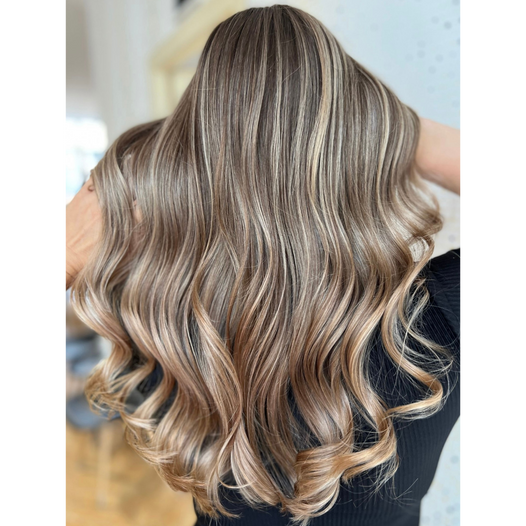
Your Guide To Identify and Treat Various Scalp Conditions

The scalp is the foundation for healthy hair but also an area prone to various conditions that can affect its health and appearance. From dandruff to psoriasis and everything in between. In this guide, we will explore common scalp conditions, their symptoms, causes, and provide tips on how to identify and treat them for a healthy, happy scalp.
- Dandruff:
Dandruff is a common scalp condition characterized by the shedding of dead skin cells. In black hair, dandruff may appear as small white flakes on the scalp or be more noticeable on dark-coloured clothing. The primary cause is an overgrowth of a yeast-like fungus called Malassezia, coupled with factors like dry skin, sensitivity to hair care products, or an underlying skin condition. To treat dandruff, use anti-dandruff / medicated shampoos containing ingredients like ketoconazole, selenium sulfide, or zinc pyrithione, and avoid harsh hair products that can further irritate the scalp. Use gentle scalp exfoliation, regular cleansing, and moisturizing can also help alleviate dandruff symptoms.
- Scalp Psoriasis:
Scalp psoriasis is an autoimmune condition that causes the rapid build-up of skin cells, leading to red, itchy, and scaly patches on the scalp. For black hair, scalp psoriasis can be particularly challenging to manage due to the risk of increased dryness and potential discoloration. Seek medical advice to develop a personalized treatment plan, which may include medicated shampoos, topical treatments, and lifestyle modifications to manage flare-ups and promote scalp health.
- Seborrheic Dermatitis:
Seborrheic dermatitis is a chronic inflammatory condition that manifests as greasy, yellowish scales and redness on the scalp. It is caused by the overgrowth of yeast, and factors like hormonal changes, stress, and a weakened immune system can contribute to its development. It can be more prevalent in areas with a high concentration of oil glands, such as the scalp's central and frontal regions. Using anti-fungal shampoos, incorporating scalp treatments containing tea tree oil or salicylic acid, and maintaining a consistent hair care routine can help manage seborrheic dermatitis.
- Scalp Acne:
Similar to facial acne, scalp acne occurs when hair follicles become clogged with oil, dead skin cells, and bacteria. It often presents as small, painful bumps on the scalp. Proper scalp hygiene, including regular cleansing with a mild shampoo, avoiding heavy hair products, and refraining from picking or scratching the affected area, can help prevent and treat scalp acne. In severe cases, consult a dermatologist for additional treatment options.
- Folliculitis:
Folliculitis is the inflammation of hair follicles, often caused by bacterial or fungal infections. It can present as small, red bumps or pustules on the scalp. In black hair, folliculitis may be triggered by excessive oil production, sweat, or tight hairstyles. To treat folliculitis, it is important to maintain a clean scalp, avoid harsh chemicals or products that clog the hair follicles, and consider antimicrobial or antifungal treatments prescribed by a dermatologist.
- Traction Alopecia:
Traction alopecia is a type of hair loss resulting from prolonged tension or pulling on the hair follicles. Common causes include tight braids, weaves, or ponytails. Prevention is key when it comes to traction alopecia. Opt for looser hairstyles, avoid excessive manipulation, and allow your hair to rest periodically. If hair loss has already occurred, consult with a trichologist or dermatologist for appropriate treatment options.
Identifying and taking proactive steps to manage and alleviate scalp conditions is essential for maintaining a healthy scalp and promoting optimal hair growth. Remember, regular scalp examinations, gentle cleansing, proper moisturization, and seeking professional advice when needed if your symptoms persist or worsen. A professional can provide personalised recommendations for your specific scalp needs. With the right care and treatment, you can enjoy a scalp that is free from discomfort.









Leave a comment